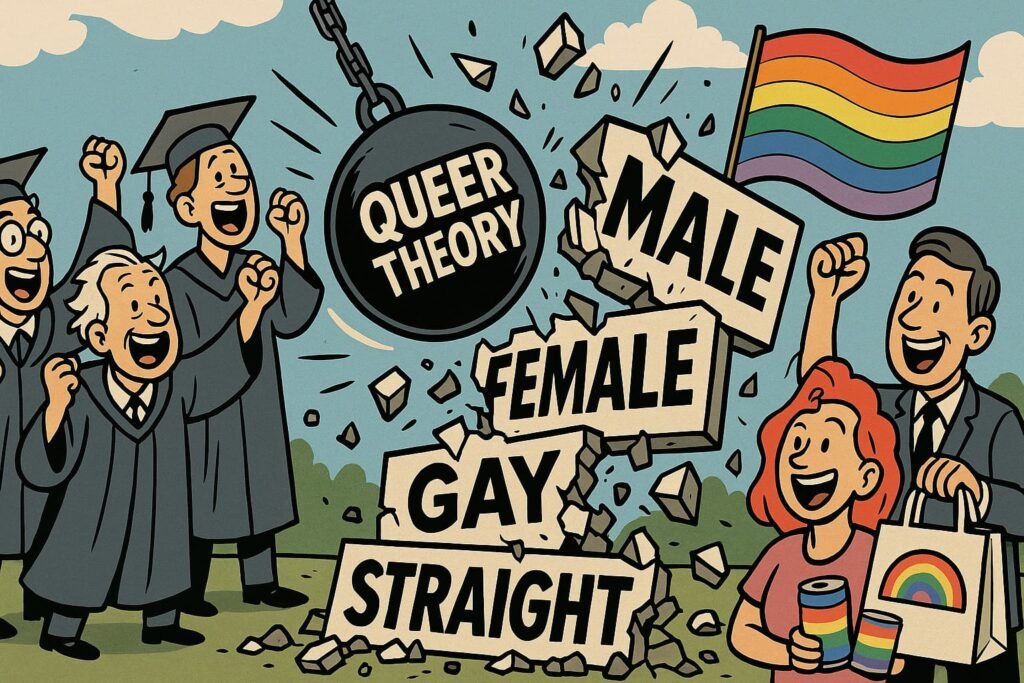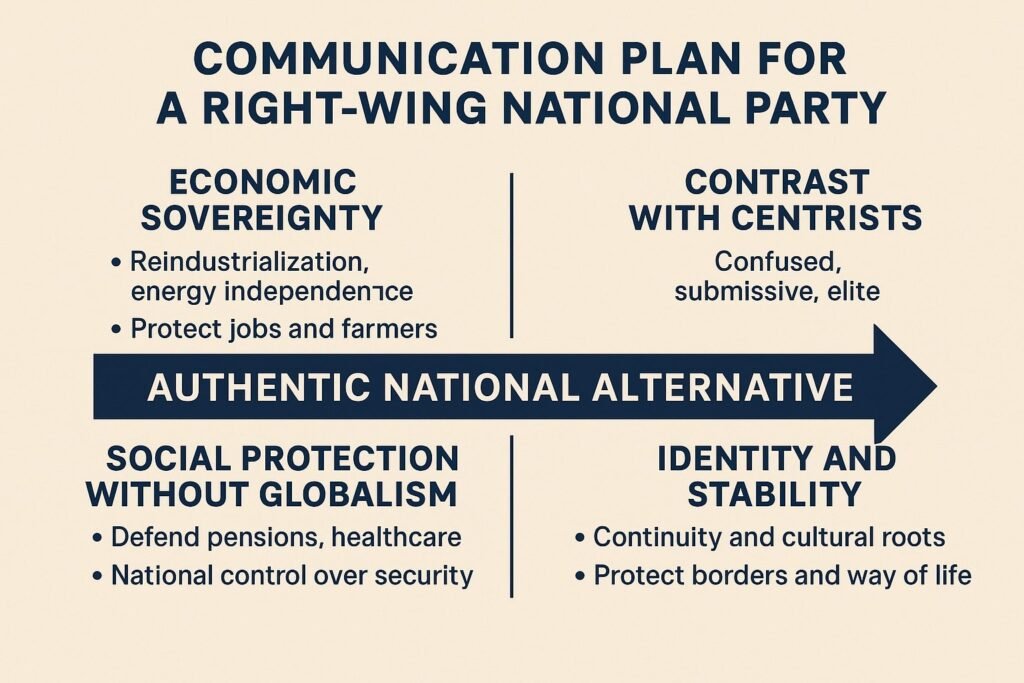Queer Theory – When Identity Becomes Endless
From Rights to Deconstruction
Gay rights once meant equal treatment — the right to live without persecution. Queer Theory took things further.
Born in the 1990s, it argued sexuality and gender aren’t stable at all. Straight, gay, male, female? Those categories themselves are the problem. Everything is fluid, temporary, and up for deconstruction.
The promise was liberation. The result? A worldview where identity never settles, politics never ends, and normality itself is treated as oppression.
Table of contents
What Is Queer Theory?
In simple terms, Queer Theory says:
- Heterosexuality and binary gender are political tools, not “normal.”
- Sexuality and identity are fluid, shifting, and unstable.
- Categories themselves — male/female, gay/straight — are oppressive boxes.
- Politics is personal: everyday life becomes a battlefield of resistance.
In short: there is no norm, only endless deconstruction of norms.
Buzzwords of Queer Theory
Like other Critical Theory offshoots, it comes with its own jargon:
- Heteronormativity – Treating straightness as the default.
- Binary Smashing – Rejecting male/female or gay/straight categories.
- Fluidity – Identity as constantly shifting.
- Queering – The act of deconstructing norms in culture, family, or politics.
These terms sound liberating — but they also ensure the work of “smashing norms” never ends.
How Queer Theory Shows Up in Practice
- In Law: Recognition of non-binary genders and fluid identity categories.
- In Education: Lessons teaching children identity is endlessly flexible.
- In Media: Films and TV promote fluidity as the new normal.
- In Corporations: Pride campaigns expand beyond sexuality into broader identity branding.
What started as an academic critique now drives law, culture, and corporate marketing.
Why Institutions Promote Queer Theory
- Academics: A limitless field — there’s always another norm to “queer.”
- Activists: Permanent campaigns powered by identity fluidity.
- Corporations: Pride logos, gender-neutral branding, and inclusion pledges sell products and polish reputations.
- Politicians: Easy progress points without tackling harder crises.
Like CRT and Gender Theory, Queer Theory creates an endless supply of jobs, policies, and slogans.
The Consequences
- Perpetual Deconstruction: Nothing stable to build on.
- Endless Jargon: Ordinary people left confused or excluded.
- Division: More categories create more conflict.
- Culture War Fuel: Traditional norms and Queer Theory lock in constant battle.
The irony? A theory meant to dissolve categories often produces even more — each demanding recognition, laws, and funding.
Why It Matters
Queer Theory isn’t just a classroom game. It shapes laws, school policies, and corporate marketing. By treating identity as endlessly unstable, it ensures activism is never finished — and neither are the bureaucracies that grow around it.
From Liberation to Confusion
Queer Theory began as a radical critique of norms. Today, it’s an ideology that destabilises categories while creating new ones.
The fight for tolerance turned into a culture where nothing is stable, everything is political, and identity is managed by academics, HR, and activists.
Next: disability studies
For a deeper understanding of Critical Theory, check out our Critical Theory Explainer Hub.
FAQ
What is Queer Theory in simple terms?
It’s the idea that sexuality and gender are fluid, and categories like male/female or gay/straight are oppressive.
Where did Queer Theory come from?
It emerged in the 1990s, influenced by Gender Theory and postmodernism.
Why is Queer Theory controversial?
Because it rejects stability, expands categories endlessly, and fuels culture wars.
How does Queer Theory affect society?
It shapes law, education, media, and corporate branding around fluid identity.
What’s the danger of Queer Theory?
That it turns identity into perpetual activism, creating confusion and division instead of clarity.
How does Gender Theory differ from Trans Studies or Queer Theory?
- Gender Theory said gender roles aren’t natural, they’re costumes society makes us wear. Flexible, but still recognisable.
- Trans Studies insisted that biology is irrelevant: gender is self-declared, and once declared, everyone else must agree.
- Queer Theory smashed the stage altogether: male/female, straight/gay are oppressive boxes. Tear them down, and you don’t get freedom — you get an endless menu of new identities.
- In short: Gender Theory = roles flexible / Trans Studies = identity declared / Queer Theory = categories meaningless



